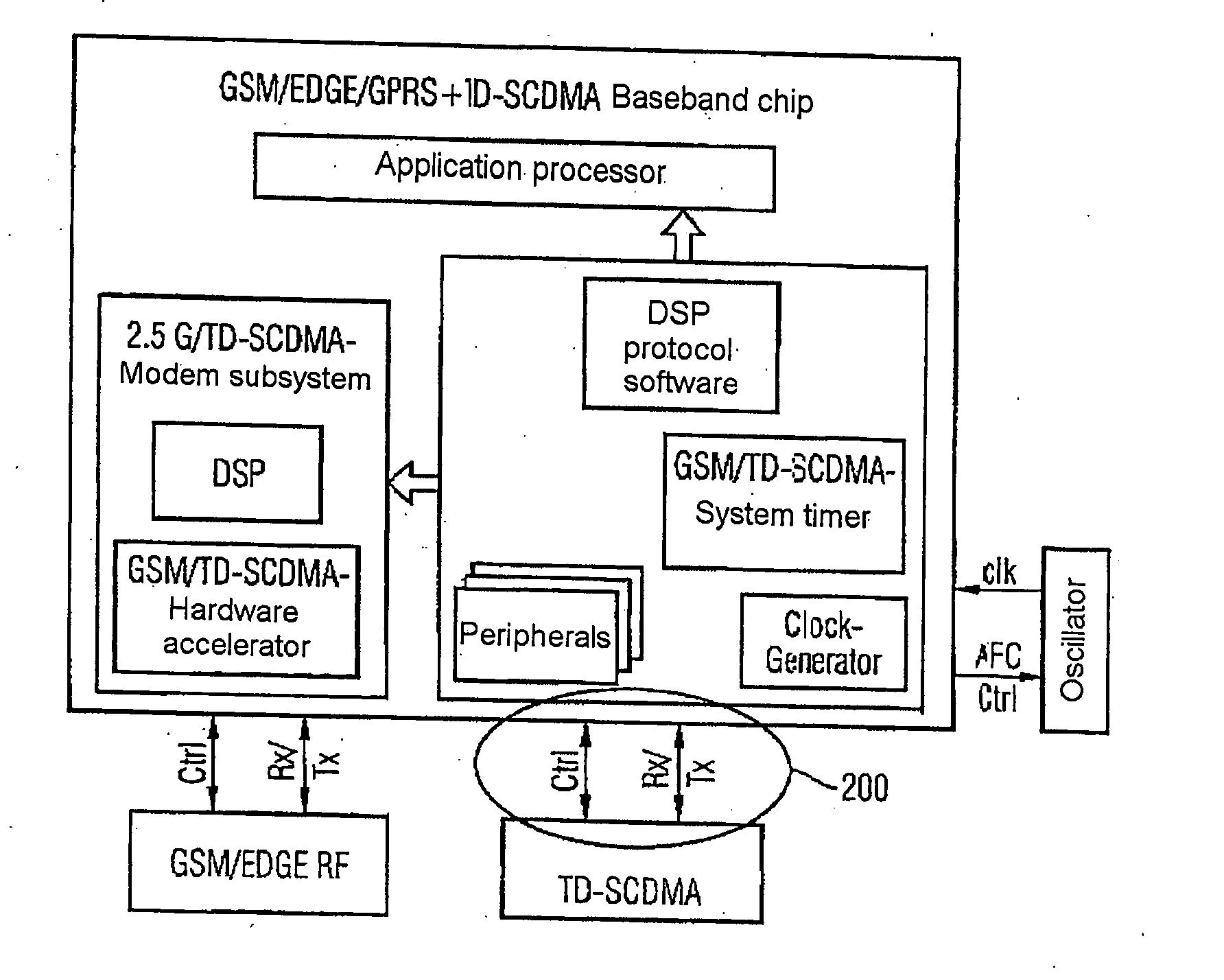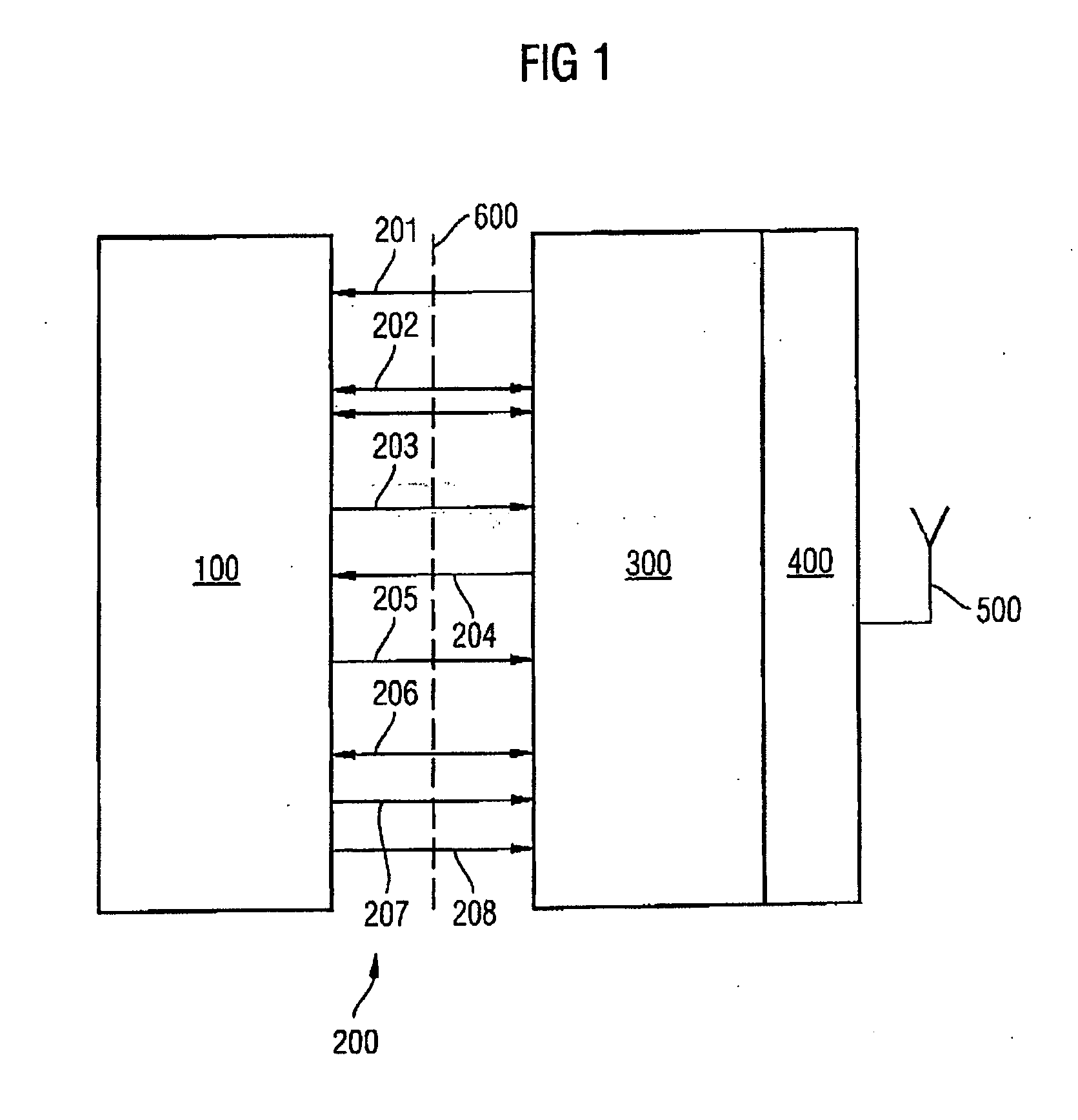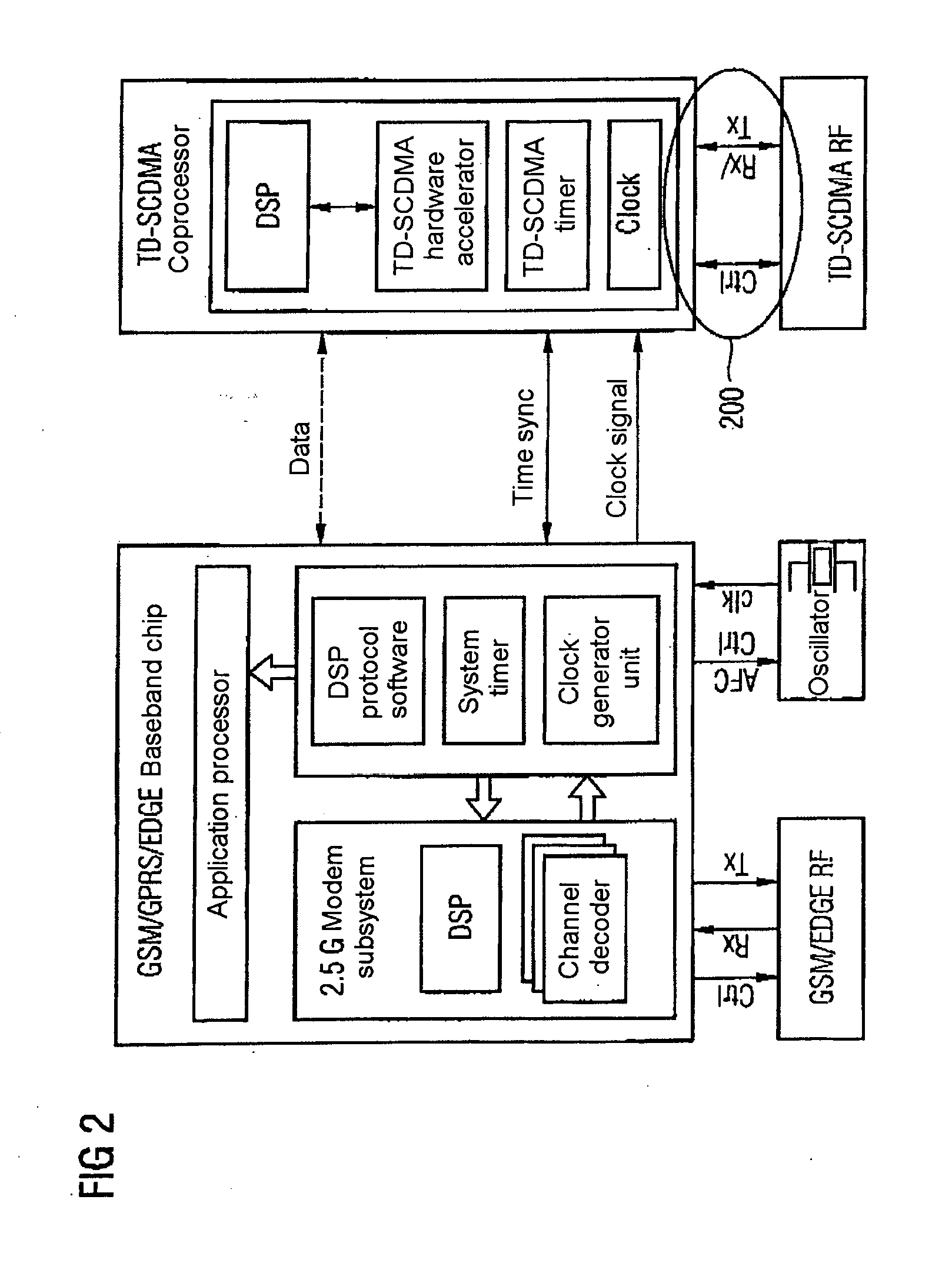Transmitting and receiving arrangement for TD-SCDMA mobile radios
- Summary
- Abstract
- Description
- Claims
- Application Information
AI Technical Summary
Benefits of technology
Problems solved by technology
Method used
Image
Examples
Embodiment Construction
[0038] As a first exemplary embodiment of the invention, FIG. 1 shows a transmitting and receiving arrangement that is implemented in a mobile station in a mobile radio network based on the TD-SCDMA Standard. The transmitting and receiving arrangement has a baseband component 100, a digital interface 200, a radio-frequency component 300, a power amplifier 400 and an antenna 500. The baseband component 100 is connected to the radio-frequency component 300 via the digital interface 200. The power amplifier 400 is connected to the output side of the radio-frequency component, and is connected to the antenna 500.
[0039] The baseband component 100 has, in the normal manner, a digital signal processor, which is not illustrated in FIG. 1, for processing of payload data, as well as a microprocessor, which is likewise not illustrated in FIG. 1, which processes configuration data and carries out the sequence control for the entire transmitting and receiving arrangement.
[0040] The baseband co...
PUM
 Login to view more
Login to view more Abstract
Description
Claims
Application Information
 Login to view more
Login to view more - R&D Engineer
- R&D Manager
- IP Professional
- Industry Leading Data Capabilities
- Powerful AI technology
- Patent DNA Extraction
Browse by: Latest US Patents, China's latest patents, Technical Efficacy Thesaurus, Application Domain, Technology Topic.
© 2024 PatSnap. All rights reserved.Legal|Privacy policy|Modern Slavery Act Transparency Statement|Sitemap



